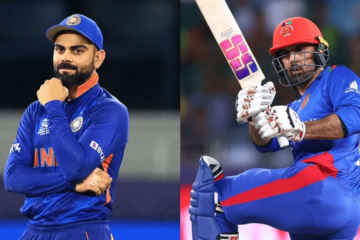In the realm of sports, few formats capture the excitement and passion of fans like the classic “West vs. East” showdown. This format, where athletes from the western and eastern regions of a country or area compete, spans multiple sports such as basketball, football (soccer), and cricket. These matchups not only ignite regional pride but also offer a treasure trove of player statistics that highlight the unique talents and skills across different geographies. Let’s delve into the complexities of player statistics in these regional battles, examining historical trends, standout performances, and the influence of these metrics on the sports landscape.
Historical Background
The tradition of West vs. East matchups has a rich history spanning several decades, with numerous sports leagues embracing this format to boost competition and captivate fans. In the United States, the NBA All-Star Game stands out as a prime example, where elite players from the Western and Eastern Conferences clash annually in a display of skill and strategy. Similarly, cricket enthusiasts are familiar with the Duleep Trophy in India, where zonal teams such as West Zone and East Zone vie for supremacy. These contests not only highlight emerging talents but also provide a stage for seasoned athletes to demonstrate their prowess and assert their dominance.
NBA All-Star Game: A Basketball Showcase

Development of Player Statistics Over Time
Since its inception in 1951, the NBA All-Star Game has been a cornerstone of the basketball calendar. This annual event has evolved over the decades, with player statistics offering valuable insights into the changing dynamics of the sport. Originally characterized by a lack of defensive play, these games often resulted in high-scoring contests—a trend that persists today, with recent matchups featuring remarkably high scores.
Remarkable Performances
Points Scored: The scoring achievements in the NBA All-Star Game are among the most celebrated. Legendary players such as Michael Jordan, Kobe Bryant, and LeBron James have made their mark with phenomenal scoring displays. A notable example is Anthony Davis’s record-setting 52-point performance in the 2017 All-Star Game, showcasing his offensive dominance.
Assists: Assists highlight a player’s ability to create scoring opportunities for teammates. Magic Johnson, renowned for his exceptional passing, holds the record for the most assists in All-Star Game history. His vision and court awareness have set a high benchmark for future playmakers.
Rebounds: Rebounding stats reflect a player’s skill in securing the ball after a missed shot. Icons like Wilt Chamberlain and Bill Russell dominated the boards in their eras. In more recent games, players like Kevin Love and Dwight Howard have demonstrated significant rebounding prowess.
Steals and Blocks: Defensive stats such as steals and blocks, while less prominent in an offense-heavy game, are crucial. Michael Jordan, noted for his defensive tenacity, and Hakeem Olajuwon, a master shot-blocker, have made notable contributions in these categories.
Essential Statistical Categories
Michael Jordan: Regarded as one of the greatest basketball players ever, Jordan’s All-Star Game performances are legendary. His 40-point game in 1988 is a testament to his all-around excellence in scoring, assisting, and defending.
LeBron James: LeBron’s versatility and career longevity have enabled him to compile impressive All-Star Game statistics. He holds the record for the most points scored in All-Star Game history, underscoring his consistent high-level performance.
Magic Johnson: Magic’s 22-assist game in 1984 remains a milestone for playmakers. His exceptional ability to orchestrate the offense and engage his teammates has set a new standard for point guards.
Exploring the Duleep Trophy in Cricket
Progression of Player Statistics Over Time
Since its inception in 1961, the Duleep Trophy has been a cornerstone of Indian domestic cricket, named in honor of Kumar Shri Duleepsinhji. This prestigious tournament features zonal teams such as West Zone and East Zone competing in a knockout format. Player statistics from these matches offer valuable insights into the strengths and strategies of different regions over the years.
Essential Statistical Metrics
Runs Scored: Batting prowess is often measured by runs scored, showcasing the skills of legendary batsmen like Sunil Gavaskar and Sachin Tendulkar in the Duleep Trophy. Their ability to accumulate runs under pressure has left a lasting impact on the tournament’s history.
Wickets Taken: Bowling prowess is highlighted by wickets taken, illustrating the influence of spinners such as Bishan Singh Bedi and Anil Kumble, along with pace bowlers like Kapil Dev, who have consistently topped the wicket charts in the Duleep Trophy.
Catches and Stumpings: Fielding statistics, including catches and stumpings, reveal a player’s defensive capabilities. Wicketkeepers like Syed Kirmani and MS Dhoni have excelled in this role, making critical contributions behind the stumps for their respective teams.
Memorable Player Performances
Sunil Gavaskar: Gavaskar’s ability to score prolifically in the Duleep Trophy highlighted his technical prowess and resilience against top-quality bowling attacks, cementing his legacy as a batting great.
Kapil Dev: Known for his all-round abilities as a pace bowler and batsman, Kapil Dev played pivotal roles in West Zone’s triumphs in the Duleep Trophy. His knack for swinging the ball and scoring crucial runs made him a formidable opponent.
Anil Kumble: Kumble’s mastery in taking wickets was a defining feature of his performances in the Duleep Trophy. His spin variations and unwavering consistency often turned matches in favor of his team, earning him a reputation as a match-winner.
Insights into the MLS All-Star Game in Soccer
Progression of Player Metrics
Since its inception in 1996, the MLS All-Star Game has grown into a premier event showcasing Major League Soccer’s top talent. Initially featuring an East vs. West format, the game has evolved in recent years to include matchups against top international clubs, adding a new dimension to player statistics and competition.
Essential Statistical Metrics
Goals Scored: Goal-scoring prowess is revered in soccer, and players like Landon Donovan and Thierry Henry have dazzled fans with their scoring feats in the MLS All-Star Game.
Assists: The ability to create scoring opportunities is crucial, and players like David Beckham and Sebastian Giovinco have excelled as playmakers, showcasing vision and precision passing.
Saves: Goalkeeping statistics, particularly saves, highlight a goalkeeper’s ability to thwart scoring chances. Tim Howard and Nick Rimando have demonstrated exceptional shot-stopping skills in the All-Star Game.
Tackles and Interceptions: Defensive contributions such as tackles and interceptions are vital in a game often dominated by attacking play. Defenders like Omar Gonzalez and Matt Besler have made significant impacts in these areas.
Memorable Player Performances
Landon Donovan: Known for his clutch performances, Donovan’s ability to score decisive goals has made him a standout in the MLS All-Star Game, earning him admiration from fans.
David Beckham: Beckham’s precision passing and ability to dictate play have been pivotal in the All-Star Game, setting up numerous scoring opportunities and controlling the game’s tempo.
Tim Howard: Howard’s reflexes and positional awareness have been crucial in goal for several All-Star Games, solidifying his reputation as a formidable shot-stopper.
Influence of Player Statistics
Player statistics in West vs East matches play a pivotal role beyond just showcasing individual brilliance; they also reveal broader trends and shifts within sports. These statistics are invaluable for scouts, coaches, and analysts, offering insights into players’ strengths and weaknesses. Moreover, they provide fans with tangible metrics to gauge a player’s contributions and compare performances across different eras.
Identifying Talent
Standout performances in West vs East matches often propel players into the national and international limelight. For example, a standout display in the NBA All-Star Game can elevate a player’s profile and open doors to lucrative endorsement deals. Similarly, excelling in the Duleep Trophy can pave the way for cricketers to earn spots in their national teams, showcasing their skills on a broader stage.
Strategic Analysis
Coaches and analysts leverage player statistics to craft effective game plans. By analyzing statistical data, teams can identify opponents’ strengths and weaknesses, allowing for tailored strategies. For instance, recognizing a basketball player’s proficiency in perimeter shooting may prompt defensive adjustments to limit their scoring opportunities, influencing the outcome of matches.
Enhancing Fan Interaction
Player statistics are integral to fan engagement, providing enthusiasts with a means to track their favorite players’ performances and benchmark them against historical standards. These statistics fuel lively debates and discussions among fans, enhancing their overall connection to the sport and deepening their engagement with player narratives and team dynamics.
By delving into player statistics in West vs East matches, stakeholders across sports—from talent scouts to avid fans—gain valuable insights that shape decisions, strategies, and the collective experience of sports enthusiasts worldwide.
Frequently Asked Questions (FAQs) About West vs East Match Player Stats
1. What are West vs East matches in sports?
West vs East matches typically refer to competitions where athletes or teams from the western and eastern regions of a country or area compete against each other. This format is common in various sports leagues worldwide.
2. Which sports feature West vs East matchups?
West vs East matchups are prevalent in sports like basketball, cricket, football (soccer), and others. These matchups often highlight regional rivalries and showcase the talents from different geographic areas.
3. How do player statistics vary in West vs East matches?
Player statistics in West vs East matches provide insights into the performance of athletes from different regions. These statistics can reveal trends in scoring, assists, rebounds (in basketball), runs scored, wickets taken (in cricket), goals scored, and more, showcasing individual and regional strengths.
4. Why are player statistics important in West vs East matches?
Player statistics serve as a benchmark for evaluating individual performances and understanding broader trends in sports. They are crucial for coaches, scouts, and analysts in assessing player capabilities, strategizing game plans, and making talent-related decisions.
5. How can player statistics in West vs East matches impact talent identification?
Standout performances in West vs East matches often attract attention from national and international selectors. For athletes, impressive stats can lead to increased opportunities for national team selections and endorsement deals, thereby boosting their career prospects.
6. What strategic insights can be derived from player statistics in West vs East matches?
Coaches and teams use player statistics to analyze opponents’ strengths and weaknesses, enabling them to tailor strategies accordingly. This data-driven approach enhances tactical planning and improves chances of success in competitive matchups.
7. How do player statistics in West vs East matches enhance fan engagement?
Player statistics provide fans with a quantitative measure of player performances, allowing them to track their favorite athletes’ achievements and compare them with historical benchmarks. This fosters lively discussions, debates, and deeper fan engagement with the sport.
8. What historical significance do West vs East matches hold in sports?
West vs East matches have a rich historical context, often reflecting cultural and regional rivalries that transcend sports. These matchups not only celebrate athletic prowess but also contribute to the narrative of sports history and tradition.
9. How can West vs East match player stats influence sports narratives?
Player statistics in West vs East matches contribute to shaping sports narratives by highlighting memorable performances, record-breaking feats, and the evolution of playing styles over time. They serve as a testament to the enduring appeal and competitive spirit of sports.
10. Where can I find comprehensive data on West vs East match player statistics?
Comprehensive data on West vs East match player statistics can often be found through official sports league websites, specialized sports analytics platforms, and historical archives maintained by sports organizations and media outlets.
Conclusion
In conclusion, West vs East match player stats play a crucial role in sports, offering a detailed glimpse into the performances of athletes from different geographic regions. These statistics not only highlight individual achievements but also reveal broader trends and strategic insights that shape the competitive landscape. From basketball to cricket and soccer, these matchups spark regional rivalries, enhance fan engagement, and provide valuable data for coaches, scouts, and analysts. As these matchups continue to evolve, player statistics will remain a cornerstone for evaluating talent, crafting strategies, and preserving the rich historical narrative of sports.




